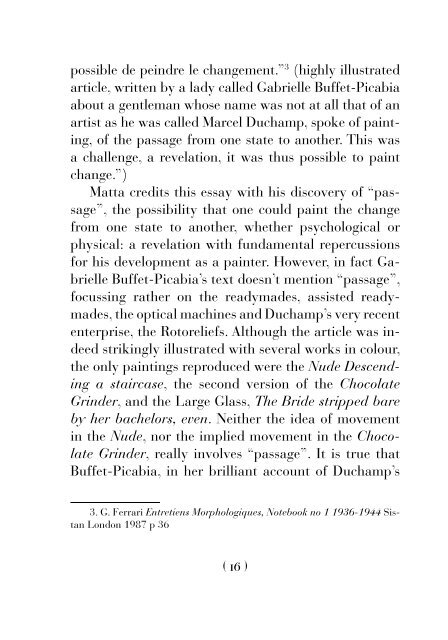Matta-Duchamp
Illustrated catalog featuring full page color illustrations and rare documentary photographs. Published by Galerie Gmurzynska in June 2018 to accompany a special cabinet exhibition at Art Basel 2018. The book includes texts by Professor Dawn Adès and Norman Rosenthal. It coincides with a broader re-evaluation of the importance of Matta internationally as well as of the influence of Duchamp on the work of 20th century artists. Edited and introduced by Krystyna Gmurzynska and Mathias Rastorfer. Essays by Dawn Adès and Norman Rosenthal. Historic interview excerpt by Robert Motherwell. 90 pages with 7 illustrations. Softcover. ISBN: 978-3-905792-09-6
Illustrated catalog featuring full page color illustrations and rare documentary photographs.
Published by Galerie Gmurzynska in June 2018 to accompany a special cabinet exhibition at Art Basel 2018. The book includes texts by Professor Dawn Adès and Norman Rosenthal. It coincides with a broader re-evaluation of the importance of Matta internationally as well as of the influence of Duchamp on the work of 20th century artists.
Edited and introduced by Krystyna Gmurzynska and Mathias Rastorfer.
Essays by Dawn Adès and Norman Rosenthal.
Historic interview excerpt by Robert Motherwell.
90 pages with 7 illustrations.
Softcover.
ISBN:
978-3-905792-09-6
Create successful ePaper yourself
Turn your PDF publications into a flip-book with our unique Google optimized e-Paper software.
possible de peindre le changement.” 3 (highly illustrated<br />
article, written by a lady called Gabrielle Buffet-Picabia<br />
about a gentleman whose name was not at all that of an<br />
artist as he was called Marcel <strong>Duchamp</strong>, spoke of painting,<br />
of the passage from one state to another. This was<br />
a challenge, a revelation, it was thus possible to paint<br />
change.”)<br />
<strong>Matta</strong> credits this essay with his discovery of “passage”,<br />
the possibility that one could paint the change<br />
from one state to another, whether psychological or<br />
physical: a revelation with fundamental repercussions<br />
for his development as a painter. However, in fact Gabrielle<br />
Buffet-Picabia’s text doesn’t mention “passage”,<br />
focussing rather on the readymades, assisted readymades,<br />
the optical machines and <strong>Duchamp</strong>’s very recent<br />
enterprise, the Rotoreliefs. Although the article was indeed<br />
strikingly illustrated with several works in colour,<br />
the only paintings reproduced were the Nude Descending<br />
a staircase, the second version of the Chocolate<br />
Grinder, and the Large Glass, The Bride stripped bare<br />
by her bachelors, even. Neither the idea of movement<br />
in the Nude, nor the implied movement in the Chocolate<br />
Grinder, really involves “passage”. It is true that<br />
Buffet-Picabia, in her brilliant account of <strong>Duchamp</strong>’s<br />
3. G. Ferrari Entretiens Morphologiques, Notebook no 1 1936-1944 Sistan<br />
London 1987 p 36<br />
( 16 )

















